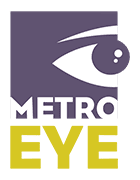And you thought you had seen it all ….a 45-YEAR-OLD Asian elephant at Amsterdam’s Artis Zoo has become the first elephant in Europe to be fitted with a contact lens, after her cornea was scratched during a scuffle with another member of the herd.
According to Irish Times, Veterinarian Anne-Marie Verbruggen had fitted contact lenses to horses before, but never to an elephant. She had to use a ladder yesterday to reach her patient and perform the delicate operation – which lasted just under an hour.
The elephant, Win Thida – the matriarch of the elephant herd at the zoo – was given daily training sessions for the past few weeks to work up to the operation. She was relaxed and co-operated fully, the zoo authorities said afterwards.
“I was called in when the zoo reported that Win Thida’s eye was painful and streaming,” said Verbruggen. “It looked as if maybe it had been scratched by a twig during a scuffle.
“The main difficulty was her height. Elephants can’t lie down for long before their immense weight impairs their breathing, so I used a ladder to get close enough. It wasn’t ideal, but it worked. She seemed happier straight away.”
The operation was carried out under anaesthetic, and Win Thida stood throughout. She can now keep her eye open more easily. And protected by the contact lens, the wound in the cornea will be able to heal and remain clean.
Win Thida is well known and loved by visitors to Artis Zoo, the oldest in the Netherlands. She started life in a work camp in Burma and was moved to a zoo in Arnhem in 1989. She transferred to Amsterdam in 2004, and has become a favourite with children.
Acrylic intra-ocular contact lenses are usually fitted for animals whose vision becomes impaired, generally as a result of cataracts. Loss of vision can blunt sex drive and stop rare and endangered animals from reproducing. As a result, the World Wildlife Fund has paid for lens transplants for brown bears in a nature reserve in China.
Special contact lenses that absorb ultra-violet rays are sometimes inserted for horses suffering from “head-shaker syndrome”, a painful and life-threatening ailment. Rhinos have also been fitted with lenses – the largest available versions which are fist-width.

